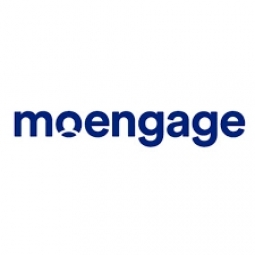Technology Category
- Functional Applications - Product Lifecycle Management Systems (PLM)
Use Cases
- Usage-Based Insurance
About The Customer
TaxiForSure is a taxi booking service that enables customers to book rides through their mobile apps, website, and call center. The company aims to provide a seamless booking experience and allows users to book a ride in under 15 seconds. TaxiForSure is now part of Ola, one of the largest ride-hailing companies in India. The company is focused on perfecting the user lifecycle, aiming to decrease churn and increase retention, referrals, and revenue. They use targeted campaigns to engage with their customers and understand their behavior better.
The Challenge
TaxiForSure, now a part of Ola, aimed to perfect the user lifecycle tail-retention, referral, and revenue. The company wanted to engage more effectively with their customers to decrease churn and increase retention, referrals, and revenue. They were looking for ways to understand their customer behavior better and send targeted campaigns to increase conversions. The challenge was to create a seamless booking experience across mobile apps, website, and call center, and to enable users to book a ride in under 15 seconds. The company also wanted to re-engage inactive users and run targeted campaigns for lapsed users.
The Solution
TaxiForSure turned to MoEngage to run multiple campaigns to keep their users engaged. They targeted users who had only tried their app once and ran campaigns for lapsed users. They also ran referral campaigns targeted at their most engaged users with the help of MoEngage’s advanced segmentation. To increase revenue, TaxiForSure onboarded new customers through referral campaigns and ran targeted campaigns to get more out of the existing customers. They aimed to increase the number of bookings done per user and the revenue per active user within the first three months of usage.
Operational Impact
Quantitative Benefit

Case Study missing?
Start adding your own!
Register with your work email and create a new case study profile for your business.
Related Case Studies.

Case Study
Safety First with Folksam
The competitiveness of the car insurance market is driving UBI growth as a means for insurance companies to differentiate their customer propositions as well as improving operational efficiency. An insurance model - usage-based insurance ("UBI") - offers possibilities for insurers to do more efficient market segmentation and accurate risk assessment and pricing. Insurers require an IoT solution for the purpose of data collection and performance analysis

Case Study
Transforming insurance pricing while improving driver safety
The Internet of Things (IoT) is revolutionizing the car insurance industry on a scale not seen since the introduction of the car itself. For decades, premiums have been calculated using proxy-based risk assessment models and historical data. Today, a growing number of innovative companies such as Quebec-based Industrielle Alliance are moving to usage-based insurance (UBI) models, driven by the advancement of telematics technologies and smart tracking devices.

Case Study
Digital Transformation in Insurance: A Case Study of Menora Mivtachim
Menora Mivtachim, one of Israel's largest pension fund and insurance carriers, was facing a significant challenge due to demographic trends in Israel. The growing rate of retirement planning and services was putting unprecedented pressure on the already strained insurance sector. The pension claims process was bottlenecked with complexities, bureaucracy, and errors. Menora Mivtachim's existing pension process was heavily manual and spreadsheet-based, requiring a team of 10 full-time employees to manage. The process involved gathering applicant information, conducting personal surveys, compiling bank information, and finalizing agreements. To leverage the growing opportunity in the retirement sector and position themselves as innovative insurtech leaders, Menora Mivtachim needed to digitalize their process, streamline the claims experience, and reduce quote times through automated processes.

Case Study
Telit | Jooycar Offering A New Solution For The Usage-Based Insurance Market
Jooycar sought to provide an end-to-end, cloud-based insurance telematics platform focused on creating value insurers and enhancing policyholders’ experience. Its usage-based insurance (UBI) solution demanded various data inputs and outputs, including automotive data collection, user data collection and output to many possible data bases and applications. To create such a flexible smart car platform, Jooycar enlisted the help of Telit’s IoT technology and expertise.

Case Study
Gexa Energy and AutoGrid's Innovative Demand Response Programs in ERCOT
Gexa Energy, a leading retail electricity provider in Texas, was seeking to introduce new demand response programs for its commercial and industrial customers in the Electric Reliability Council of Texas (ERCOT) market. The challenge was to provide a platform that would allow these customers to lower their energy bills by adjusting their energy consumption during peak energy demand or high wholesale electricity prices. The solution needed to be intelligent, scalable, and offer both manual and automated options for adjusting energy consumption. The demand response programs needed to include Emergency Response Service (ERS), Real-Time Price Response (RTPR), and 4 Coincident Peak (4CP).
Case Study
AIG Enhances Customer Experience and Boosts Efficiency with OpenLegacy
AIG, one of the world's largest financial and insurance companies, faced significant challenges in delivering a seamless customer experience. Despite promoting a 'one call does it all' approach, their call center representatives had to manually enter data from their call center application into their core insurance system. Their IBM i applications, while reliable, were difficult to integrate with other systems in the technical stack. This made it nearly impossible to provide users with instant calculations of car insurance exchanges, a process that would have taken a year of development with the existing tools. This delay could potentially lead to the loss of clients and increased costs. AIG had invested heavily in streamlining their call center processes, but implementation proved challenging and the long-term approach was still far from achieving a fully online, fully digital workflow. Additionally, AIG needed a better way to pay insurance claims without redundant, monthly manual effort. The process took eight days of work every month and could not be done on the legacy system, leading to frustration and a sense of wasted time and effort for the insurance agents.







